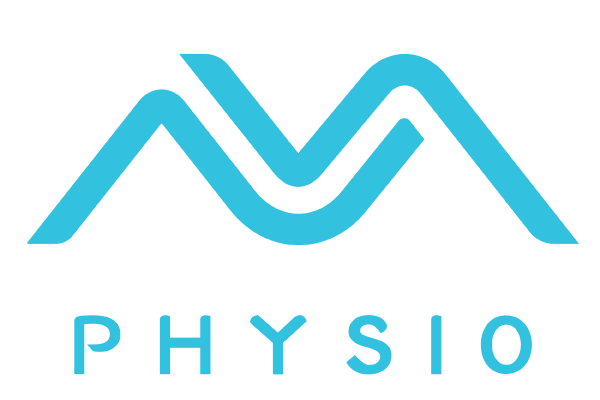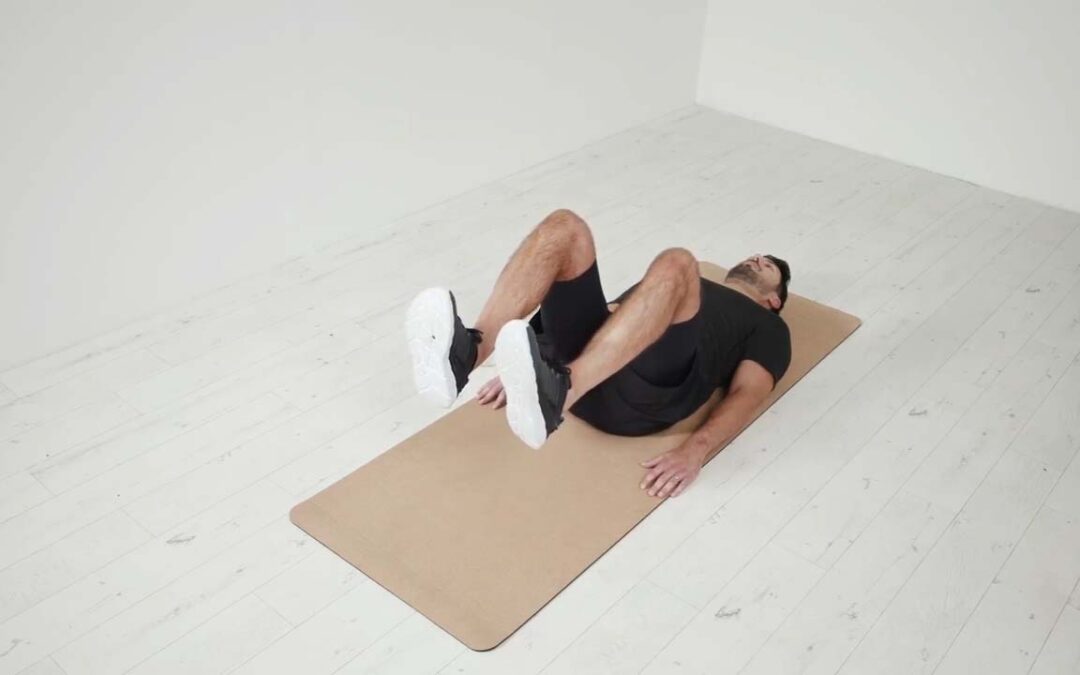What is Stabilization Flexion Exercise?
Stabilization flexion exercise is a type of physical therapy exercise that targets the stabilizing muscles of the lower back. This exercise involves flexing the hips and knees while keeping the spine straight, which helps to improve the strength and stability of the muscles surrounding the spine. It is often used to treat lower back pain and improve overall spinal function. To perform the exercise correctly, it is important to maintain proper form and engage the core muscles. This exercise can be done on a mat or on a stability ball.
How to Perform Stabilization Flexion Exercise?
Experience a transformative core workout with these floor exercises. Embrace proper form, engaging muscles from head to toe for optimal results and faster healing. Follow these steps for a safe and effective routine, catering to individual pain thresholds under physio guidance.
- Lie on a supportive surface with knees bent, feet flat.
- Lengthen the spine, lifting head, and relaxing shoulders.
- Flatten back using lower abs, maintaining the posture.
- Lift one leg just beyond 90 degrees, then lift the opposite leg.
- Bend knees slightly, keeping lower legs relaxed.
- Lower legs alternately, focusing on hip movement.
- Keep knees below 100 degrees, prevent lower back arching.
- Engage lower abs throughout to avoid arching.
- Breathe consistently; follow physio advice for pain tolerance.
Which Muscles are Targeted in Stabilization Flexion Exercises?
Stabilization flexion exercises primarily target the hip flexors, gluteal muscles, and deep core muscles. Let’s take a closer look at the role of these muscles in hip stability and proper movement:
- Hip Flexors: The hip flexor muscles, such as the iliopsoas and rectus femoris, play a crucial role in hip movement and stability. Strengthening these muscles can help improve hip joint stability and reduce the risk of re-injury.
- Gluteal Muscles: The gluteal muscles, including the gluteus maximus, medius, and minimus, are responsible for hip extension, abduction, and rotation. Weakness in these muscles can lead to hip instability and compensatory movements, increasing the risk of further injury. Stabilization flexion exercises target the gluteal muscles, promoting their strength and function.
- Deep Core Muscles: The deep core muscles, such as the transverse abdominis and multifidus, provide support and stability to the spine, pelvis, and hip joints. Strengthening these muscles through stabilization flexion exercises can improve overall stability and prevent excessive stress on the injured hip joint.
By targeting these specific muscles, stabilization flexion exercises contribute to hip injury recovery by improving muscle strength, balance, and stability.
| Targeted Muscles | Role in Hip Stability and Movement |
|---|---|
| Hip Flexors | Primary hip movement and stability |
| Gluteal Muscles | Hip extension, abduction, and rotation |
| Deep Core Muscles | Support and stability to the spine, pelvis, and hip joints |
Why Stabilization Flexion Important for Hip Injury Recovery?
Incorporating stabilization flexion exercises into physiotherapy treatment for hip injury recovery offers several benefits that aid in the healing process. Let’s explore these benefits in detail:
A. Improved Muscle Strength
One of the significant advantages of stabilization flexion exercises is the improvement in muscle strength. By specifically targeting the hip flexors and gluteal muscles, these exercises help strengthen these key muscle groups, which play a vital role in hip stability and movement.
Strong hip flexors and gluteal muscles provide support to the injured hip joint, reducing the strain on surrounding structures. This support aids in the healing process and allows patients to perform daily activities with greater ease and confidence.
B. Enhanced Balance and Stability
Balance and stability are essential components of a successful hip injury recovery. Stabilization flexion exercises engage the deep core muscles, which are crucial for maintaining overall stability and balance.
By strengthening the deep core muscles, stabilization flexion exercises improve the body’s ability to maintain proper alignment and control during movement. This enhanced balance and stability help prevent re-injury and promote correct movement patterns, reducing the risk of future hip complications.
C. Increased Range of Motion
Hip injuries often result in decreased range of motion, limiting a patient’s ability to perform daily activities comfortably. Stabilization flexion exercises can effectively address this issue by increasing hip joint mobility and flexibility.
Regular practice of stabilization flexion exercises helps to gradually improve the range of motion in the hip joint. This increased range of motion enables patients to regain their functional abilities and perform movements with greater ease.
By incorporating stabilization flexion exercises into physiotherapy treatment, patients can experience improved muscle strength, enhanced balance and stability, and increased range of motion in their hips. These benefits contribute to a faster and more efficient recovery process.
Role of Merlin Physio for Flexion Exercises
Merlin Physio app plays a crucial role in aiding hip injury recovery through stabilization Flexion. Here’s how it can be of assistance:
- 1. Guided Exercises: The app provides step-by-step guidance on performing stabilization Flexion correctly. It ensures that patients are using the right form and technique to avoid further strain on their injured hip.
- 2. Customized Workouts: Merlin Physio can tailor stabilization lunge exercises to the patient’s specific needs and level of recovery. It considers factors like the severity of the injury, range of motion, and pain tolerance to create a personalized exercise plan.
- 3. Progress Tracking: Patients can track their progress over time. The app records the number of lunges performed, the duration of each session, and the level of difficulty. This data helps physiotherapists monitor the recovery process and make necessary adjustments to the exercise plan.
- 4. Real-time Feedback: Merlin Physio offers real-time feedback during stabilization Flexion. It can analyze a patient’s posture and movement, providing instant corrections and tips to ensure that they are performing the exercises effectively and safely.
- 5. Motivation and Accountability: The app keeps patients motivated by setting goals and sending reminders for their daily or weekly workouts. It also offers positive reinforcement, celebrating milestones and achievements along the way.
- 6. Injury Prevention: Beyond recovery, Merlin Physio emphasizes the importance of injury prevention. It educates patients on techniques and exercises to strengthen the hip joint, reducing the risk of future injuries.
Incorporating Stabilization Flexion Exercise in Physiotherapy Treatment
Now that we understand the benefits of stabilization flexion exercises, let’s explore how they can be effectively incorporated into physiotherapy treatment for hip injury recovery.
A. Assessment and Individualization
Before beginning any exercise program, it is crucial to undergo a thorough assessment by a physiotherapist. This assessment helps identify the specific hip injury, assess the range of motion, and evaluate the strength of the surrounding muscles.
Based on the assessment findings, the physiotherapist can customize the stabilization flexion exercise to suit the patient’s specific needs. Individualization ensures that the exercise is tailored to address the patient’s unique situation, optimizing the recovery process.
B. Gradual Progression
When starting stabilization flexion exercises, it is important to begin at an appropriate difficulty level to avoid exacerbating the injury. The physiotherapist will guide the patient in gradually progressing the exercise, starting with the unaffected leg.
Gradual progression allows the injured hip to adapt and strengthen without placing excessive stress on the joint. It is essential to follow the physiotherapist’s recommendations and progress at a pace that suits the individual’s recovery rate.
C. Repetitions and Sets
The number of repetitions and sets in stabilization flexion exercises should be determined based on the patient’s condition and goals. The physiotherapist will consider factors such as pain tolerance, muscle strength, and overall fitness level when prescribing the appropriate repetitions and sets.
As the patient progresses in their recovery journey, the physiotherapist may adjust the number of repetitions and sets to ensure continued challenge and improvement.
D. Monitoring Form and Technique
Proper form and technique are crucial in stabilization flexion exercises to target the correct muscles and prevent compensatory movements. It is essential to work closely with a physiotherapist who can provide feedback and make necessary corrections.
Regular monitoring of form and technique ensures that the exercise is performed correctly, maximizing its effectiveness in the recovery process. The physiotherapist will guide the patient in maintaining proper alignment, engaging the correct muscles, and avoiding any potentially harmful movements.
E. Integration with Other Exercises
To create a comprehensive physiotherapy program for hip injury recovery, it is beneficial to integrate stabilization flexion exercises with other hip-strengthening exercises. This combination helps target multiple muscle groups and promotes overall hip strength and stability.
The physiotherapist may recommend additional exercises such as hip abduction, hip extension, or bridging exercises to complement the stabilization flexion exercise. This integrated approach enhances the effectiveness of the treatment plan, facilitating a faster and more complete recovery.
Precautions and Considerations
While stabilization flexion exercises can be highly beneficial for hip injury recovery, certain precautions and considerations should be taken into account.
A. Consultation with a Physiotherapist
Before attempting stabilization flexion exercises or any other exercise program, it is essential to seek professional guidance from a physiotherapist. A physiotherapist will assess the patient’s specific hip injury, identify any pre-existing conditions, and provide appropriate recommendations.
Consultation with a physiotherapist ensures that the exercise program is safe and tailored to the patient’s individual needs, optimizing the recovery process and minimizing the risk of further injury.
B. Starting at an Appropriate Level
To avoid worsening the hip injury, it is crucial to start stabilization flexion exercises at an appropriate difficulty level. Patients should follow the physiotherapist’s guidance and begin with exercises that are suitable for their current condition.
Starting at an appropriate level allows the patient’s body to adapt gradually and build strength without placing excessive strain on the injured hip joint. As the patient progresses, the physiotherapist will adjust the exercise intensity accordingly.
C. Listening to the Body
During stabilization flexion exercises, patients should pay close attention to their bodies and be mindful of any pain or discomfort. It is important to differentiate between muscle fatigue and actual pain.
If the exercise causes significant pain or discomfort, it may indicate that the exercise is too strenuous or that the hip needs more time to heal. Patients should communicate any concerns or discomfort to their physiotherapist for appropriate modifications or guidance.
By considering these precautions and listening to the body, patients can safely and effectively incorporate stabilization flexion exercises into their physiotherapy treatment for hip injury recovery.
Conclusion
Stabilization flexion exercises offer a valuable tool in the physiotherapist’s arsenal for helping patients recover from hip injuries. By targeting the hip flexors, gluteal muscles, and deep core muscles, these exercises improve muscle strength, enhance balance and stability, and increase range of motion in the hips. By working closely with a physiotherapist and following proper technique and progression, patients can unlock faster healing and achieve a more efficient recovery from hip injuries.

